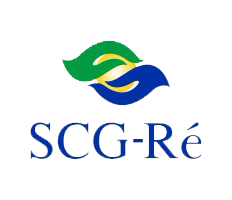The Rise of Alternative Risk Transfer: How Reinsurers Are Embracing the Changing Landscape
For decades, traditional reinsurance reigned supreme, but the world of risk transfer is shifting. Enter Alternative Risk Transfer (ART), a constellation of innovative solutions gaining traction as businesses seek flexible and cost-effective ways to manage risk. This rise presents both challenges and opportunities for reinsurers, who must adapt and evolve to remain relevant in this changing landscape.
Understanding ART:
ART encompasses a diverse range of solutions beyond traditional insurance, allowing entities to retain more risk themselves, transfer it to dedicated captive structures, or leverage parametric triggers to receive payouts based on pre-defined events. This approach offers several advantages:
- Tailored Solutions: ART allows for crafting bespoke risk-sharing arrangements, catering to specific needs and achieving cost-efficiency.
- Increased Risk Retention: Businesses can retain more risk, fostering a proactive approach to risk management and potentially lowering premiums.
- Faster Payouts: Parametric insurance eliminates the need for lengthy claims adjustments, ensuring swift financial support in times of need.
Reinsurers Embrace ART:
With ART’s growing significance, reinsurers are no longer bystanders. Instead, they’re actively adapting, embracing ART in several ways:
- Developing and Offering ART Solutions: Many reinsurers are creating their own captive management services, parametric insurance products, and other ART offerings, catering to diverse client needs.
- Partnering with ART Providers: Reinsurers are collaborating with specialized ART providers, leveraging their expertise to expand their capabilities and provide clients with a wider range of solutions.
- Providing Data and Analytics: Reinsurers’ risk modeling expertise and vast data resources can be invaluable for ART solutions, particularly parametric insurance, where accurate risk assessment is crucial.
- Acting as Capacity Providers: Even with ART, businesses may seek some traditional reinsurance coverage. Reinsurers can partner with ART structures, providing additional risk-bearing capacity when needed.
Challenges and Opportunities:
This evolution isn’t without its challenges. ART can disrupt traditional revenue streams for reinsurers, and adapting to new risk-sharing models requires innovation and expertise. However, within these challenges lie significant opportunities:
- Growth Potential: ART represents a burgeoning market with immense growth potential, offering reinsurers access to new clients and revenue streams.
- Enhanced Value Proposition: By embracing ART, reinsurers can expand their offerings, becoming not just risk carriers but also risk management partners, providing valuable strategic advice and expertise.
- Differentiation: In a competitive market, embracing ART allows reinsurers to differentiate themselves, attracting forward-thinking clients seeking innovative risk solutions.
The Future of Risk Transfer:
The rise of ART is not a threat to traditional reinsurance, but rather a necessary evolution. By embracing ART and adapting their business models, reinsurers can become vital partners in a more diversified and efficient risk transfer landscape. The future belongs to those who embrace change, and in the world of risk, the future is undeniably ART-ful.













